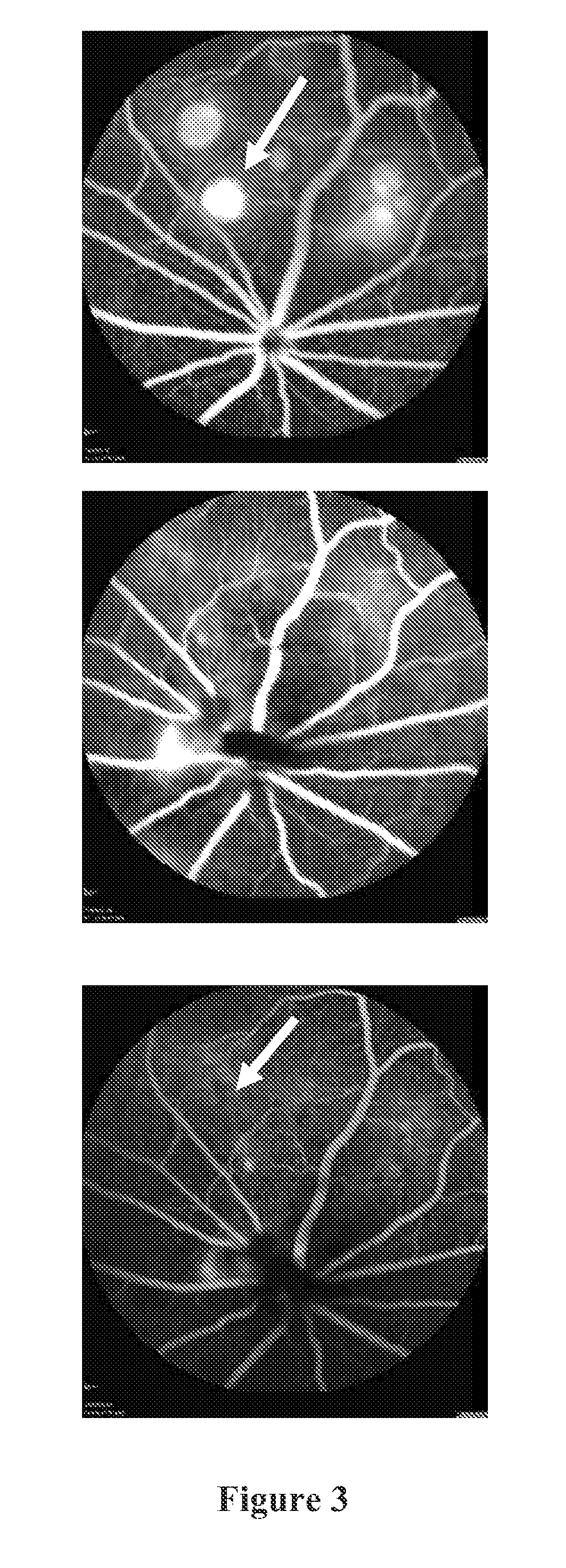Compositions and methods for treating ocular diseases
- Summary
- Abstract
- Description
- Claims
- Application Information
AI Technical Summary
Benefits of technology
Problems solved by technology
Method used
Image
Examples
Embodiment Construction
5.1 Definitions
[0080]As used herein, the term “dose(s)” means a quantity of the compound or a pharmaceutically acceptable salt, solvate, or hydrate thereof to be administered at one time. A dose may comprise a single unit dosage form, or alternatively may comprise more than a single unit dosage form (e.g., a single dose may comprise two tablets), or even less than a single unit dosage form (e.g., a single dose may comprise half of a tablet).
[0081]As used herein, the term “daily dose” means a quantity of the compound, or a pharmaceutically acceptable salt, solvate, or hydrate thereof that is administered in a 24 hour period. Accordingly, a daily dose may be administered all at once (i.e., once daily dosing) or alternatively the daily dosing may be divided such that administration of the compound is twice daily, three times daily, or even four times daily.
[0082]As used herein, the term “patient” or “subject” means a human.
[0083]As used herein, an “effective amount” refers to that amou...
PUM
| Property | Measurement | Unit |
|---|---|---|
| Time | aaaaa | aaaaa |
| Time | aaaaa | aaaaa |
| Time | aaaaa | aaaaa |
Abstract
Description
Claims
Application Information
 Login to View More
Login to View More - R&D
- Intellectual Property
- Life Sciences
- Materials
- Tech Scout
- Unparalleled Data Quality
- Higher Quality Content
- 60% Fewer Hallucinations
Browse by: Latest US Patents, China's latest patents, Technical Efficacy Thesaurus, Application Domain, Technology Topic, Popular Technical Reports.
© 2025 PatSnap. All rights reserved.Legal|Privacy policy|Modern Slavery Act Transparency Statement|Sitemap|About US| Contact US: help@patsnap.com



